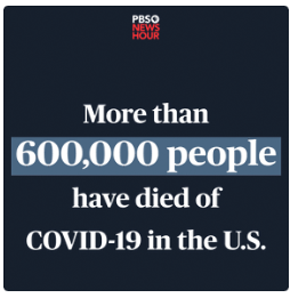Health Plan Weekly
-
CVS/Aetna 1Q Results Receive Wall Street Stamp of Approval
CVS Health Corp. impressed Wall Street analysts with strong first-quarter 2021 financial results, which were largely driven by the performance of its PBM and health benefits segments. Evercore ISI analysts, for example, gushed that the diversified health care giant’s results were “exciting” because they provided “some glimmers of the bull thesis playing out.”
“All three segments rowed in unison and put up better than expected results” despite facing challenges in the retail segment, a weak cough/cold/flu season, and a “re-ramping of health care utilization,” the equities analysts wrote in a May 4 note to investors.

-
Payers Use Data, Outreach, Rides to Encourage Vaccination
Health insurers across the country are doing what they can to get their members vaccinated against COVID-19, drawing on member communication and big data strategies that they have developed over the last several years. Many payers are helping members schedule appointments, securing their transportation to vaccination sites, and even encouraging skeptical members to get inoculated.
Efforts to get members to vaccination sites build on industrywide trends meant to address challenges related to social determinants of health. Many Medicare Advantage plans already offer transportation to members for clinical appointments, and some non-emergency medical transportation is covered by Medicaid.

-
Biden Admin Exchange Rule Chips Away at Trump-Era Policies
CMS on April 30 finalized part two of the annual omnibus rule governing the Affordable Care Act (ACA) exchanges, using the opportunity to roll back a few parts of the regulation that the Trump administration didn’t cement before leaving office.
In January, the Trump administration finalized the most controversial sections of the 2022 Notice of Benefit and Payment Parameters (NBPP), including provisions that codified unprecedented waiver flexibilities and those that invited states to ditch a centralized health insurance marketplace. The Biden administration won’t be able to roll those back without restarting the rulemaking process, yet it used this most recent rule (86 Fed. Reg. 24140, May 5, 2021) to signal that such a move is coming soon.

-
News Briefs
✦ CMS on April 30 released the second half of the 2022 Notice of Benefit and Payment Parameters for the Affordable Care Act exchanges, which cuts consumers’ out-of-pocket costs by $400 annually. The Trump administration finalized the first phase of the omnibus rule that sets parameters for ACA exchange plans just days before President Joe Biden’s inauguration. The second phase of the rule also “includes several provisions to help consumers more easily distinguish between plan options and increase opportunities to qualify for future special enrollment periods,” according to the Biden administration. Read more at https://go.cms.gov/3eMwudB.
✦ Included in President Joe Biden’s $1.8 trillion antipoverty package, the American Families Plan, is a proposal to make the expanded Affordable Care Act exchange subsidies permanent. The administration’s COVID-19 relief legislation enacted in March increased premium tax credits for people who already qualify for financial help and made subsidies available to people who previously didn’t qualify — but the expanded subsidies were set to expire after 2022. In his address to Congress on April 28, Biden called for health care reforms such as allowing the government to negotiate drug prices and reducing deductibles for ACA marketplace plans, but those are not included in his new legislative proposal. Visit https://bit.ly/3aPQjzm.

-
ACA Exchange Enrollment Was Up Even Before Pandemic SEP
by Jinghong Chen
Over 12 million people selected or were automatically reenrolled in health plans during the 2021 open enrollment period for Affordable Care Act exchange plans — which ended Dec. 15. — representing a 5% increase from 11.4 million sign-ups for the 2020 plan year, according to CMS. Texas, Hawaii, Mississippi, Georgia and Florida saw more than 10% increases. In addition, as of March 31 more than 528,000 people signed up for health insurance during the current special enrollment period related to the pandemic, which lasts through Aug. 15.











